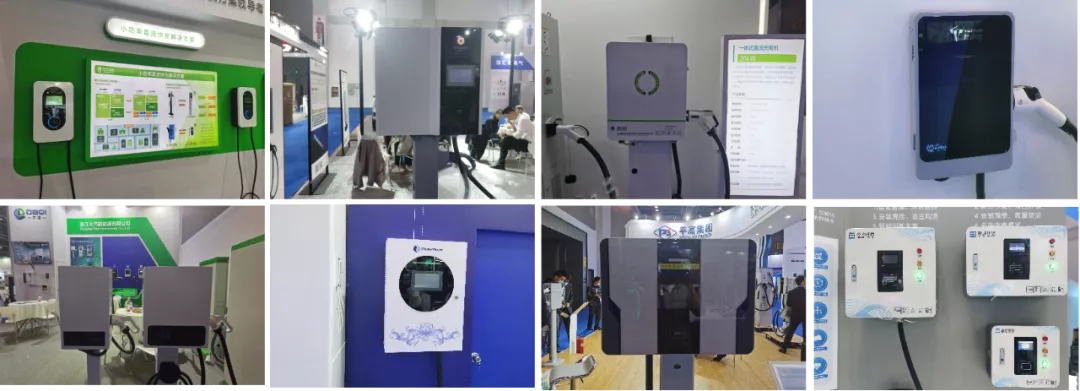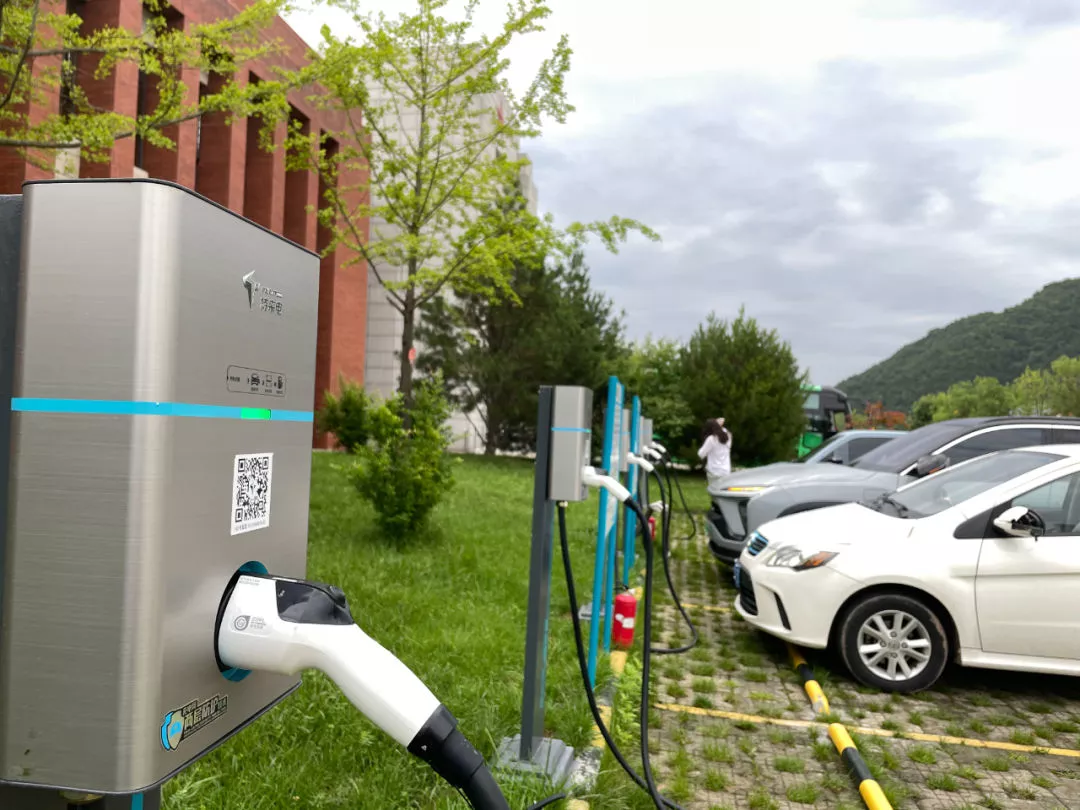Author: Huangshan
On October 22nd, I attended the 2021 State Grid Electric Vehicle Exhibition in Hangzhou. The exhibition brings together the mainstream domestic charging pile and related supporting enterprises. Unlike previous exhibitions of this kind, many companies showcased small power DC charging piles ranging from 3.5kW to 30kW, mainly concentrated in 20kW.

To put it simply, our electric vehicles used to have 2 charging ports: AC and DC, also known as slow charging and fast charging ports.
Currently, the power of slow charging piles on the market is mainly concentrated at 7kW, while fast charging piles have increased from 60kW to 120kW, and even higher.
Small power DC charging piles can provide greater power than slow charging, generally below 20kW, and the charging connector uses a DC charging port which is generally known as a fast charging port.
This year, TELD has already begun trial operations of small power DC charging piles, and announced that it will no longer build AC charging piles, but will fully deploy small power DC piles.
Combined with the industry’s voice in recent years to remove the on-board charger (OBC) from the vehicle and retain only the fast charging port, NIO ET7, which will be launched next year, will only have a fast charging port and no OBC.
On the one hand, charging equipment and operators want to promote small power DC charging, and on the other hand, vehicle manufacturers seem to have plans to remove the OBC. These two ideas collide, will small power DC and removing the OBC become trends?
Why small power DC charging?
I exchanged views with exhibitors at the exhibition, and their answers were different.
Some said that small power DC charging is faster and more cost-effective than fast charging piles.
Some said it is suitable for places such as supermarkets and tourist attractions where users stay for 1-3 hours. Ordinary AC charging piles are too slow, and fast charging piles are wasteful. Small power DC charging is just right and can install several more piles than fast charging.
Some said that small power DC charging has communication capabilities and can achieve orderly charging and V2G.
Are they right? Yes, but it is not enough to support small power DC charging becoming a trend, it can only be a small segmented scenario. But I vaguely feel that things are not that simple.
Let’s take a look at the current situation of private electric vehicle charging pile installations.In the early stages of the electric vehicle (EV) industry, the number of EVs was small, and most EV owners could easily install a private charging station. However, as EVs became a trend, the demand for charging stations increased dramatically. The electricity supply in cities and communities is limited, and the unregulated installation of charging stations led to some owners not being able to install their own.
This contradiction, between random installation in the early stages and inevitable demand in the later stages, is now common in many first- and second-tier cities. Property management companies, citing insufficient electrical capacity, have refused to install charging stations, leaving many new EV owners unable to charge their vehicles at home.
If EV owners cannot charge their vehicles at home, the convenience and economy of owning an EV will be seriously compromised. One would not relish the need to go to a public charging station every time the vehicle needed charging.
Unless we resolve the community charging problem, we cannot reach the huge market of households with EVs. The use of low-power direct current (DC) chargers, among other solutions, can help resolve technical and policy issues.
The core issue is how to balance the growing demand for energy with everyone’s desire to charge their vehicle in their personal parking space.
According to Ni Feng, Deputy Director of Technology Strategy Center at NARI Group, low-power DC is most appropriate for non-commercial vehicles such as private and official vehicles that are parked for long periods. These vehicles do not require a high level of power, and 3.5-7 kW is sufficient. The priority is to make sure everyone can charge their cars before looking to speed up the process.
For the last two years, industry insiders have been in a trial phase of orderly charging, attempting to make charging stations in regional units an energy and data exchange intermediary. On the one hand, these stations communicate in real-time with the vehicle to receive charging data. On the other hand, they have to be responsive to the electricity demand within regional units, ensuring electrical safety. Additionally, these stations need to be networked and managed centrally.
This requires upgrading the alternating current (AC) charging stations, which are currently not supported by existing standards. However, due to its DC nature, low-power DC can reference certain existing protocols.
Teld, an EV charging service provider, has already launched pilot projects on a national level, providing a complete solution of “orderly charging + group management and control + low-power DC”. This solution meets the charging needs of EV owners, while also ensuring that electrical demand within the region is below its safety peak.
A power expert at State Grid Corporation of China stated that the company is also testing low-power DC. It is not only for orderly charging but also for future Vehicle-to-Grid (V2G) and interactive grid-side applications. Whether this technology will become the mainstream still depends on market choices.
 During a conversation with Zhu Yulong, a contributing author at the Electric Vehicle Observer, he discussed how solving private charging issues is fundamentally about fairness and efficiency. In the early stages of the industry, efficiency was the priority and private charging stations were installed wherever possible, from slow charging to fast charging. However, as the industry moves into a growth period, it is increasingly important to shift towards fairness, so that only a small group of people have access to home charging and the rest must go elsewhere to charge their cars.
During a conversation with Zhu Yulong, a contributing author at the Electric Vehicle Observer, he discussed how solving private charging issues is fundamentally about fairness and efficiency. In the early stages of the industry, efficiency was the priority and private charging stations were installed wherever possible, from slow charging to fast charging. However, as the industry moves into a growth period, it is increasingly important to shift towards fairness, so that only a small group of people have access to home charging and the rest must go elsewhere to charge their cars.
Low-power DC charging may be a solution, but related standards still need to be improved and the model still needs to be explored.
So why would automakers go to the On-Board Charger (OBC)? What are the benefits?
According to Zhu Yulong, “Removing the OBC and corresponding wire harnesses reduces weight, lowers costs, and reduces failure points. Removing the OBC and just having a slow charging plug can save around 1500 RMB per vehicle, which is a significant cost reduction for the entire vehicle.”
The reason for the ongoing debate within the industry is that the cost reduction on the vehicle side must be balanced against the possibility of increased marketing costs. After all, there is already a large inventory of slow-charging stations in China. Without slow-charging plugs, users will lose some convenience, and if the competition keeps those plugs, it will increase marketing costs, which may ultimately affect sales.
Regarding this view, a senior executive at an OBC company agrees, stating that unless users are given a low-power DC charging station for free when they buy a car, this cost savings will not be significant. Moreover, he said that whether or not automakers switch to OBCs also depends on whether low-power DC charging is popular or becoming a trend. They do not expect the automakers they are currently in contact with to abandon OBCs in the next 2-3 years.
It is worth noting that as the number of electric vehicles increases, continuing to give away charging stations with a car purchase will result in lower installation rates for private users, making it increasingly meaningless.
Like Tesla, treating charging stations as options and allowing users to install them before purchasing will gradually become the trend in the future. After all, charging stations are not something automakers can lead in a community, nor do they want to.
But charging issues must be solved for users, and it is highly likely that community-based charging service providers will emerge in the future to address this. At this point, giving away charging stations when purchasing a car is less meaningful, as it will be provided by charging service providers. This may be where low-power DC charging is used.
Therefore, whether or not to promote low-power DC charging on the charging side, and whether or not automakers will move to OBCs, is still a gray area where neither side can truly dominate, but as development continues, the two will influence each other.
As indicated by the aforementioned senior executive, ultimately, all technological and model advancements are worth exploring in order to solve problems for users and create value.
This article is a translation by ChatGPT of a Chinese report from 42HOW. If you have any questions about it, please email bd@42how.com.